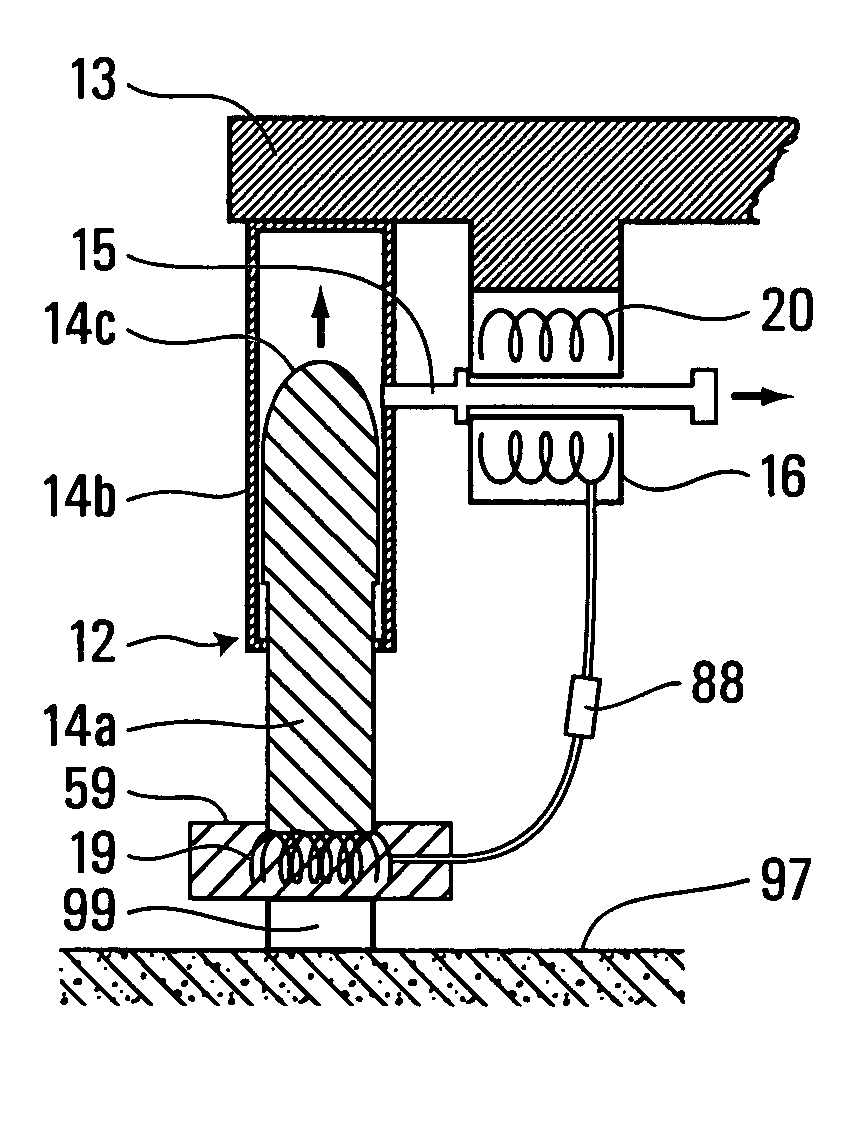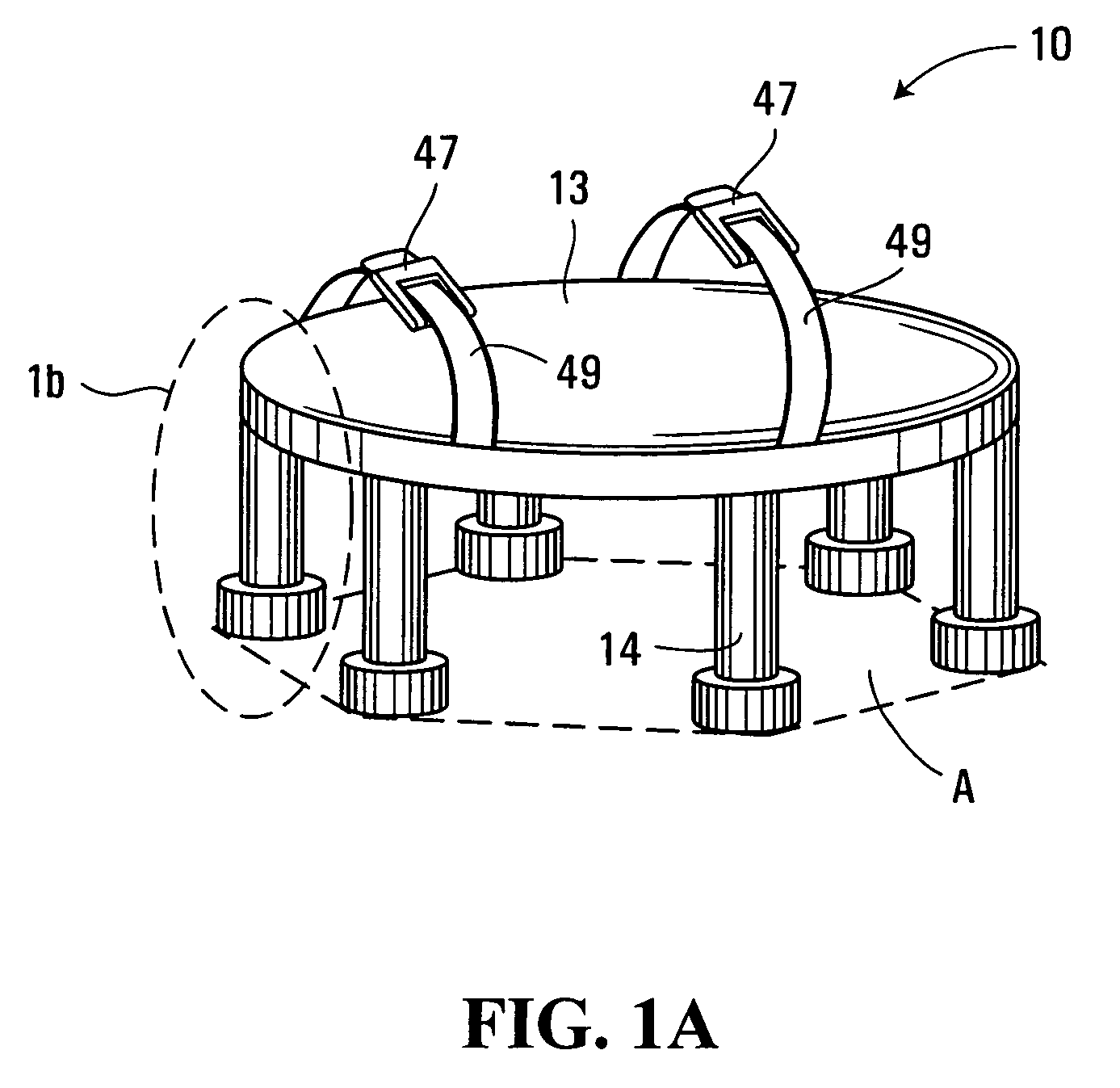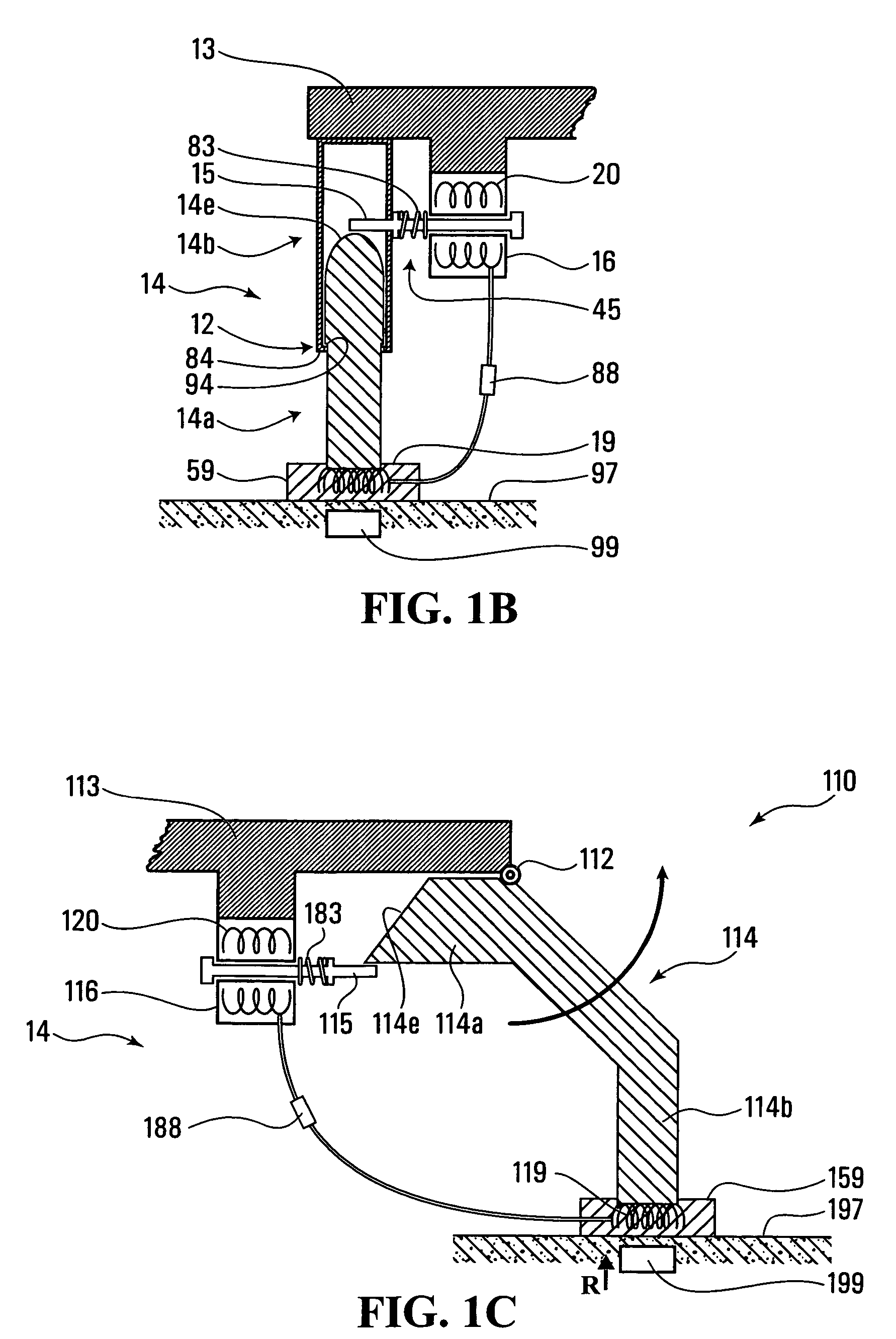Landmine avoidance and protection device
a protection device and landmine technology, applied in the field of landmine avoidance and protection devices, can solve the problems of severe injuries to hands, arms, faces, hands, etc., and achieve the effect of preventing any injury to the wearer and not interfering with the wearer
- Summary
- Abstract
- Description
- Claims
- Application Information
AI Technical Summary
Benefits of technology
Problems solved by technology
Method used
Image
Examples
Embodiment Construction
[0045]With reference first to FIG. 1a, a mine protection and avoidance device generally designated 10 includes a frame which can be in the form of a plate 13, support legs 14 and straps 49. The plate 13 can be a wide variety of shapes but serves as a supporting plate for support legs and is suitable for being secured directly or indirectly to an appendage, normally a foot, of a person. A plate could also be configured to be securable to a part of a mechanical or robotic device. In other embodiments the support legs might be directly connected to a load source or to a frame other than a plate. The plate 13 can be formed of any material that is capable of satisfying the load bearing requirements, but may be made of a material which would provide some significant level of protection should a mine explode underneath the plate 13. Suitable materials include but are not limited to steel, kevlar and other metals such as by way of example only, aluminium.
[0046]Plate 13 may be constructed wi...
PUM
 Login to View More
Login to View More Abstract
Description
Claims
Application Information
 Login to View More
Login to View More - R&D
- Intellectual Property
- Life Sciences
- Materials
- Tech Scout
- Unparalleled Data Quality
- Higher Quality Content
- 60% Fewer Hallucinations
Browse by: Latest US Patents, China's latest patents, Technical Efficacy Thesaurus, Application Domain, Technology Topic, Popular Technical Reports.
© 2025 PatSnap. All rights reserved.Legal|Privacy policy|Modern Slavery Act Transparency Statement|Sitemap|About US| Contact US: help@patsnap.com



